How to grow kiwi at home: simple tips for a successful result
Kiwi - an amazing plant with many useful properties: it strengthens the immune system (one large or two medium kiwi fruits satisfy a person's daily need for vitamin C), has a beneficial effect on the functioning of the kidneys and digestive organs, improves the breakdown of proteins and increases blood clotting, quickly restores the body after exertion , contains vitamins of group B and E, minerals magnesium, phosphorus, calcium and iron.
The most amazing thing is that this tropical and thermophilic plant can be grown at home, following simple advice.
Content:
Description of kiwi
Kiwi belongs to the genus Actinidia, a kind of Delicious Actinidia. The homeland of the kiwi is China; in Europe it was even nicknamed the Chinese gooseberry. Actinidia fruits resemble a kiwi bird in appearance, hence the second name of the plant - kiwi.
The kiwi plant is a vine with a length of 8 to 10 meters with large green leaves.
Flowers are orange-yellow, dioecious. Fruits are brown, round or elliptical in shape, about 3 x 5 cm, the skin is covered with fine hairs.
Reproduction
Kiwi can be propagated in the following ways:
- Vegetative
- Seeds
Since kiwi is a dioecious plant, both female and male plants are required to produce fruit. When breeding seeds you will have to wait for the flowering period (usually after 6 years) to find out the sex of the plant. With this method of cultivation, about 4/5 of the seedlings are male, in this regard, it is desirable to plant more plants.
Pick a ripe fruit, cut into pieces and remove the seeds.
Rinse them with running water, you can place them in a thin cloth or gauze for convenience. After this, the seeds can be germinated in two ways:
First way:
- Fill a glass halfway with room temperature clean water and add the seeds. Place the glass in a warm place for a week. During this time, the seeds should begin to open, if this did not happen, the water must be replaced with fresh water.
- After the seeds have opened, they must be placed in a kind of greenhouse: put a damp cloth on a small plate, put the seeds on it and close them with a plastic jar or container. Place the greenhouse in a warm place, for example, on a windowsill above a radiator.
- After 2-3 days, the roots will appear, and the seeds can be planted in the soil.
The soil can be prepared in one of the following ways:
- Take equal parts of black soil, peat and sand.
- Purchase neutral or slightly acidic soil for citrus fruits and roses in stores.
- Purchase soil for tropical lianas.
Second way:
- Mix the seeds with moistened sand and keep them for half a month at a temperature of 10 to 20 degrees Celsius, then put them in the refrigerator for 2-3 weeks.
- Put expanded clay on the bottom of small containers, moistened soil on it.
- Place the seeds (for each a separate container) on the ground, lightly sprinkling with a layer of soil no more than 2 millimeters. When preparing the seeds with the second method, mix the top layer of earth with a mixture of seeds and sand.
- Cover the containers with foil and place in a warm, bright room. Ventilate greenhouses daily and spray soil and shoots (when they sprout).
- When shoots appear, remove the film for a few minutes daily, increasing the period of time every day.
- After 2-3 true leaves appear in the sprouts transplant kiwi in a larger container (you can take the same soil, only with a lower peat content).
If possible, it is better to purchase seedlings in the nursery: male and two or three female plants. Then there will be no need to wait several years to determine the gender.
Reproduction in a vegetative way:
- For vegetative propagation, it is easiest to use cuttings.
- In the summer, cut off shoots with 2-3 buds with a pruner (at the bottom at an inclination of 45 degrees, at the top, 1 centimeter above the first bud, the cut should be even).
- Place the cuttings in a container filled with water to a height of 5 centimeters, cover with damp paper and leave for a day.
- In order for the cuttings to take root well, they are planted in peat with a layer of 30 centimeters in a greenhouse, in which a high level of air humidity must be maintained.
Growing conditions
Kiwi loves moisture very much, so the ground should always be moist, but water stagnation should not be allowed. It is best to use a spray bottle for watering: the moisture will be uniform and not excessive.
As a southern plant, kiwi is very picky about good lighting and warmth. For growing kiwi at home, a window sill or an insulated balcony on the south side is suitable, you can use artificial lighting lamps. It is important to remember that direct sunlight can cause plant burns, so place the kiwi containers so that the light falls from the side, or cover the window with gauze or use blinds.
Rotate the container of growing kiwi a little every half month to get a lush, even crown and an even vine.
Once a year feed kiwi with compost or vermicompost. Dig a groove around the plant and fill it with compost, cover with soil on top. When watering, even the deepest roots will receive minerals.
Care Tips
Kiwi is a powerful plant that grows vigorously. Keep this in mind when choosing a place for a vine pot. In winter, kiwi can shed foliage, it must be placed in a bright room with a temperature of ten degrees, reduce watering.
Transplant the plant in the spring and remove any weak branches. It is better to water kiwi with settled warm water with a temperature slightly above room temperature.
Water the plant once or twice a week in the spring and summer.
As the roots grow, the kiwi must be transplanted into larger containers. Plants under the age of three are transplanted two to three times a year, three-year-olds - once a year, from five-year-olds - once every two to three years.
Indicator of necessity transplants plants is:
- Slowdown in growth.
- Drying out of the soil, despite the regular watering.
- Germination root system through the drainage hole.
Transplant try to do it quickly so that the roots do not have time to dry out. The soil is replaced partially or completely. The new container should be about 2 centimeters taller and wider than the previous one.
Do not forget to put a layer of expanded clay on the bottom for drainage. As potassium and phosphorus fertilizers you can add 2 grams of wood ash and 16 grams of crushed eggshell to the soil. With good care, kiwi can bear fruit for over 40 years.
More information can be found in the video.




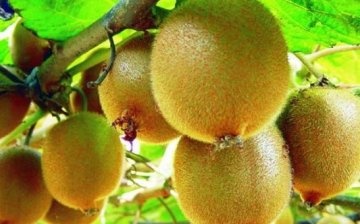
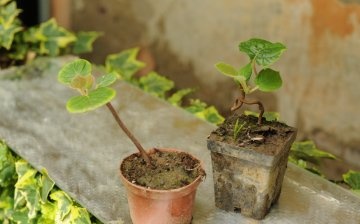

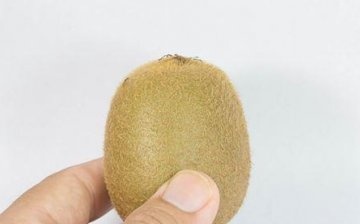





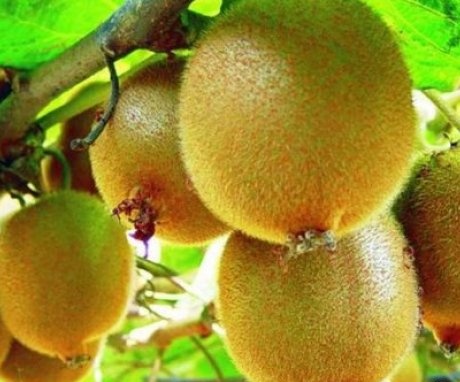
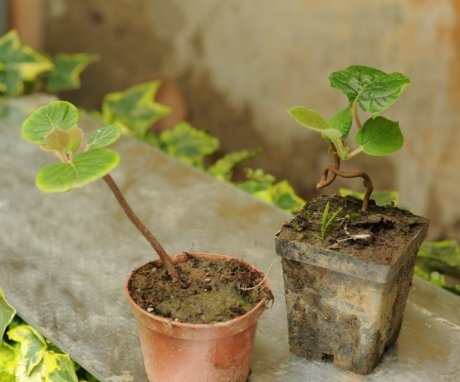
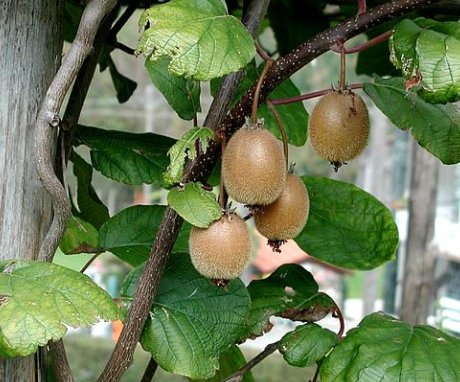
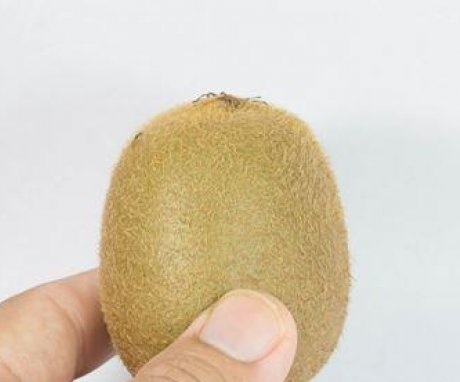
I never thought about growing kiwi, and even at home. It would be interesting to plant seeds and germinate them, it would even be interesting to wait and the six years required for flowering.
I really want to grow something exotic on the balcony, I hear about kiwi for the first time, but I'm very interested. I will definitely try to wait for the harvest for a long time, but it's still interesting.
Tried to grow kiwi at home several times. Unfortunately, nothing happens, the seeds do not germinate. Although I kind of extract them from fairly ripe fruits. Music will continue my experiments.